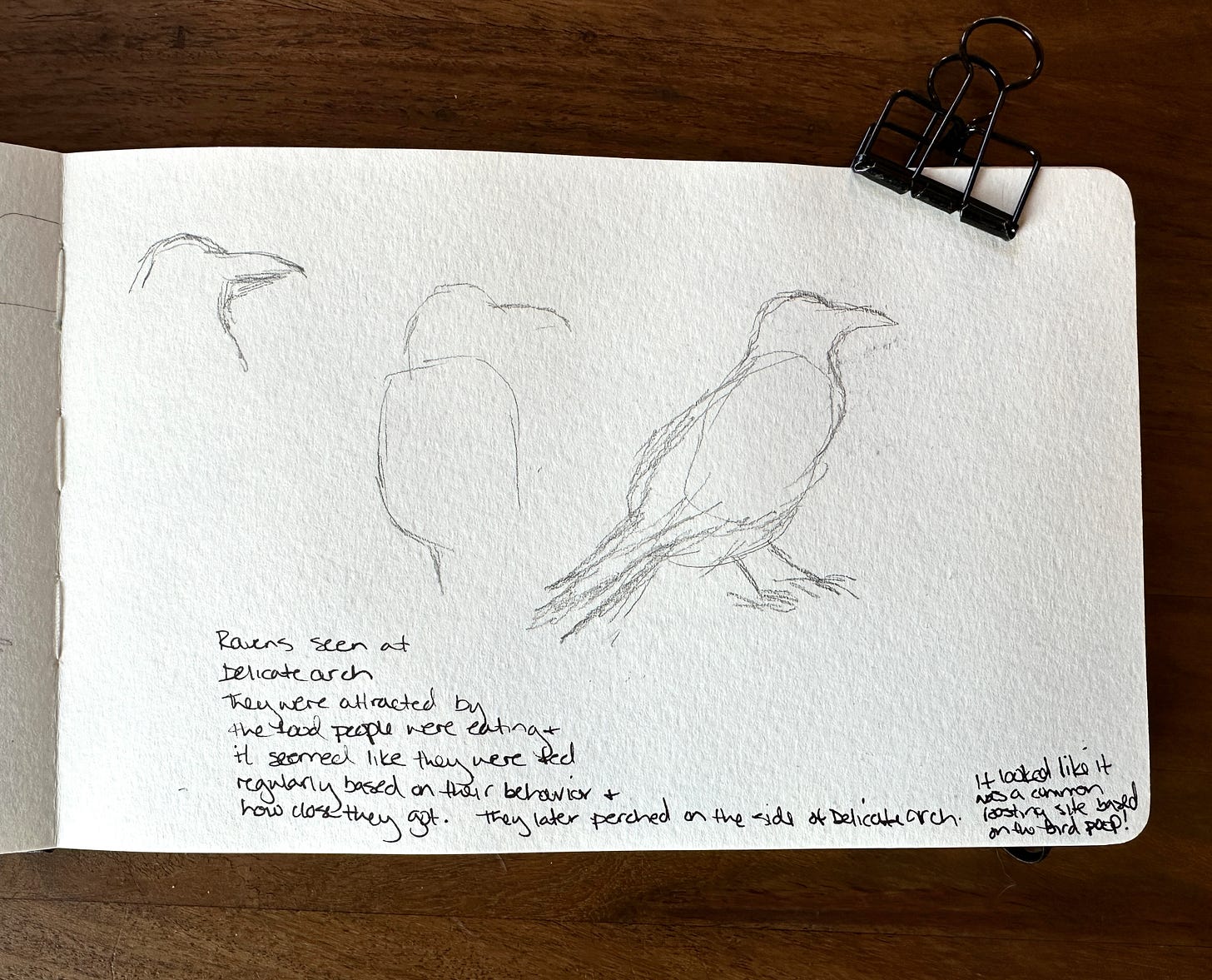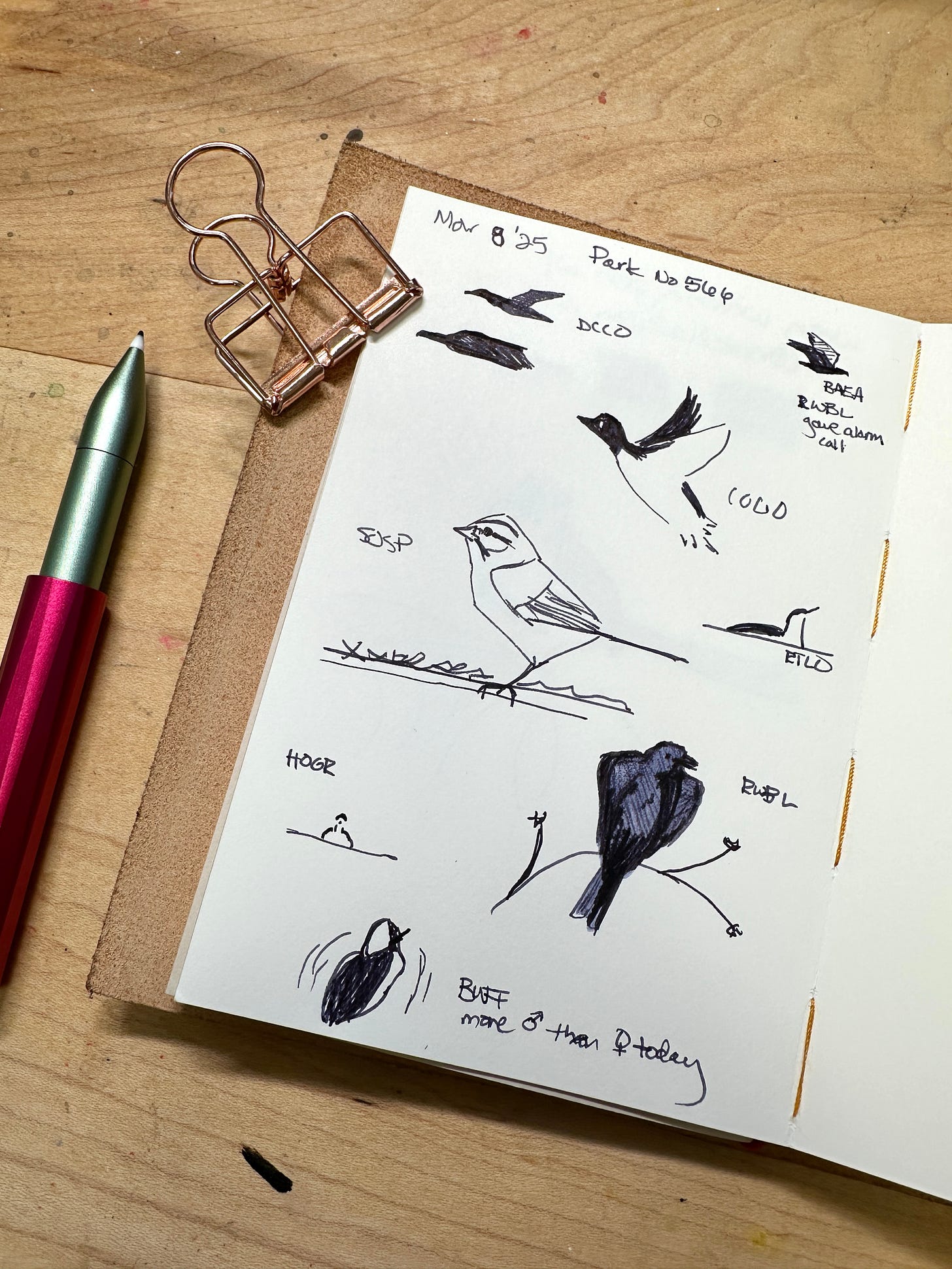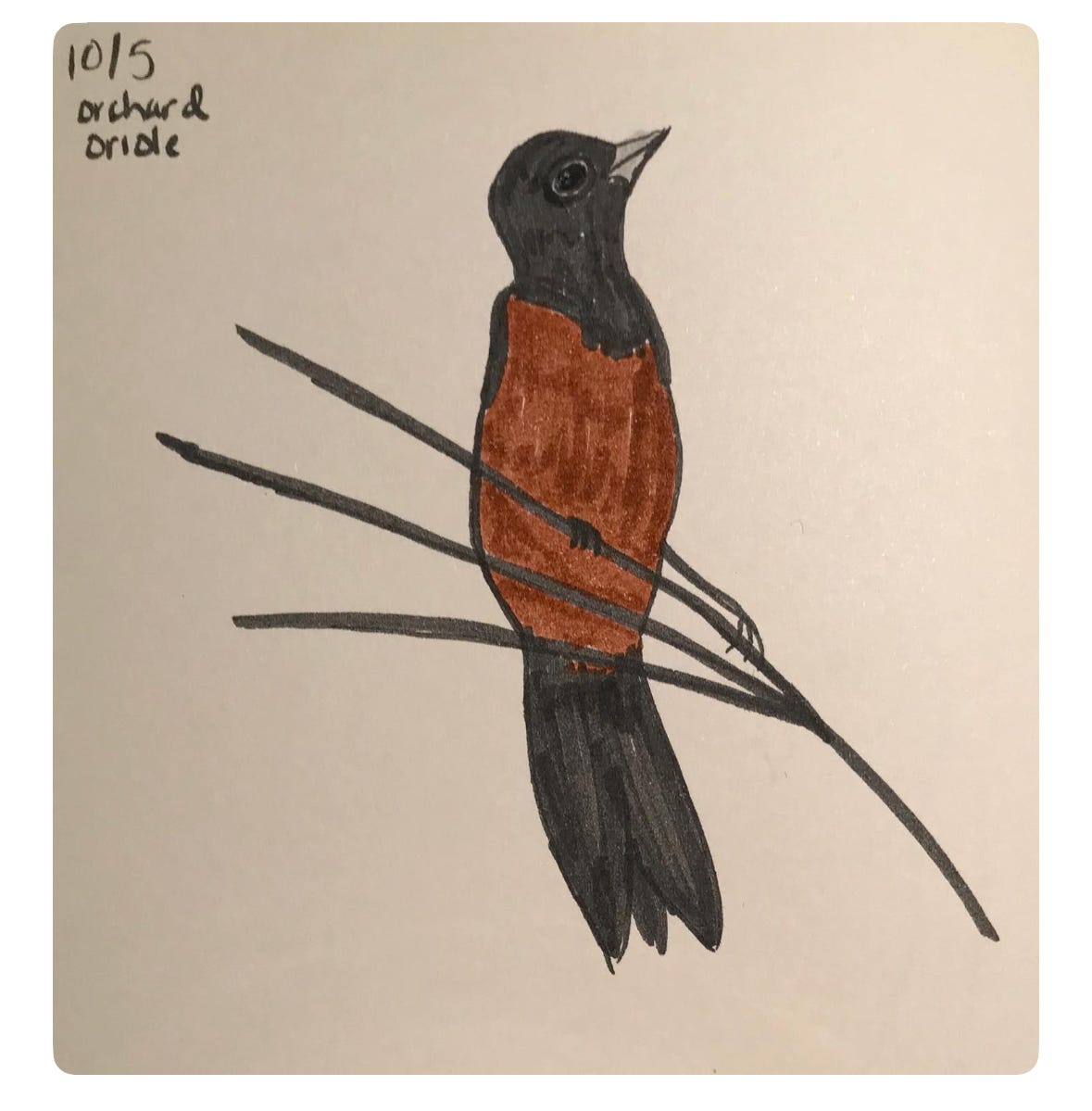What if I told you there was an exercise you could start doing today, with no pre-requisite skill, that will improve your memory and your observational skills, and you probably already have the tools you need to get started just lying around the house—would you try it?
Well you are in luck and such a magical exercise does exist—it’s called drawing.
Before I lose you to your thoughts of “I can’t even draw stick figures!” or “I haven’t drawn since I was 10,” please hear me out. While I am obviously biased (I love drawing and I teach drawing) my bias is backed by a substantial amount of pretty cool and well-replicated science. Drawing can and will enrich your birding.
Drawing will help you learn AND remember what you’ve learned
Faced with a tricky ID challenge that just won’t stick in your head? Overwhelmed by learning the differences between bird species? Try drawing them.
Research shows that drawing improves memory more effectively than writing or passively looking at pictures. This seems to be the case for drawing when you are learning new words as well as new concepts. Drawing is such a powerful tool for learning and memory because it engages multiple brain processes at once—the physical movements of your body to make the drawing, the mental effort to create a visual representation of what you are learning, and your cognitive processing of the image once you’ve drawn it. It seems that combining all of these different processes get’s your brain really fired up and makes for some strong connections.
Drawing all of the sparrows that pass through Chicago helped me to learn their field marks when I was a beginner birder, and drawing the differences in bill shape between Trumpeter and Tundra Swans finally cemented those differences in my brain this winter (I had previously learned and promptly forgotten these differences after a notable Christmas Bird Count in 2020).

Drawing will improve your memories of your experiences
If you’re a birder like me who treasurers your time in the natural world and wants to keep those memories as fresh as vivid as you can, try drawing them.
When comparing drawn experiences with those written about in a diary, drawn events are recalled with greater accuracy, quality, and detail.
Here’s a picture I drew while hiking in Arches National Park in 2021. This was early in my days of nature journaling and drawing in public, and I remember feeling shy and self-conscious. This drawing doesn’t look like much, and maybe you wouldn’t be able to tell they were ravens without my clever labeling, but when I look at these hesitant pencil lines I’m brought right back to Delicate Arch.
The bright sunlight, the shock of seeing soooooo many people there, and the croaks of the Common Ravens wandering amongst us are vivid even now. Equally vivid is the smell of the all-too-generous dose of Axe Body Spray the people who sat near us were wearing. Their approach (or perhaps their smell) made the ravens retreat to the arch and ended my sketching session.
No skill and very little time is required
Perhaps you, like me, long to create beautiful and detailed field sketches of your bird observations, but you don’t do it because your skills aren’t there yet. Well, the really cool thing is you don’t have to be a skilled artist to reap the the learning and memory benefits of drawing. Memory performance was consistent for drawers in these studies regardless of their skill level. An added bonus—you don’t even need to draw for a long time. Drawing for as little as 4 seconds was enough to provide a benefit. This is great news if you just want to quickly scribble a few doodles while out birding.
I’ve been intermittently practicing memory sketching while out on the field, which entails jotting down all the key features you can remember of a subject after you stop looking at it. Intermittently is the key word there—my skill at this type of sketching is still very rudimentary, and I’ve gotten stuck by focusing on the outcome, which actually prevents me from practicing it. Reading the studies on the memory benefits of drawing yesterday reminded me that field sketching is all about the process, not the product. I quickly added a few more sketches to my nature journal to help me remember yesterday’s sightings.
Memory sketching is a great technique to use in the field because it gets you to carefully observe your subject and attempt to memorize it’s key details—for birds that’s overall shape, posture, and notable field marks. Birds move a lot, and they tend to fly out of sight when you’re busy looking down at your page. Focus on observing the bird as carefully as you can while it’s in view, then draw everything you can remember once it’s gone.
Things to keep in mind
Keep your supplies simple
When it comes to drawing in the field, simple, lightweight and portable supplies are best. This advice is oft repeated by nature journaling educators, and it’s finally sinking into my head. I’ve never met an art supply I don’t like, so last year I carried a variety into the field with me—colored pencils, pens, paint palettes, you name it, I probably had it. I love to using these tools at home, but in the field they were cumbersome, heavy to carry for hours of birding, and honestly got in my way more often than they helped me.
The best materials for drawing quickly in the field are the simplest—a pocket sized notebook and a pen or soft pencil1 that’ll move easily and quickly over the page are all you really need.
Keep your focus on process over product
The art of field sketching is the art of learning to observe and draw nature quickly without worrying about the result. Claire Walker Leslie
Think of your drawings as visual note taking. Observing and then drawing what we’ve noticed not only helps us remember, it helps us to connect with the natural world on a deep level. That’s the good stuff. Who cares what your drawing looks like if it helped you discover something new and fascinating, or helped you form lasting memories of an experience you had while out in nature. Your drawing doesn’t need to be “good” to make this happen.
No one ever has to see your drawings
If just the thought of attempting to draw makes you cringe, just remember that no one ever needs to see your drawings. It doesn’t matter if all you manage are a collection of blobs and dashes-they are just for you. Think of them as doodles if that makes it easier to get started.
When I resurrected my drawing habit in 2019, after a multi-decade break, I started sharing my drawings on Instagram.
This was helpful at the time because it created some external accountability to create regularly, and the encouragement from my friends and fellow birders felt nice. But with time, as the likes and my follower count climbed, the reason I was creating became warped. I stopped drawing just for the fun of it, and my focus became almost exclusively on the product, not the process. I was feeling a lot of self-imposed pressure, and a whole lot less joy. Because of that I’m currently on a break from sharing art on Instagram, and that’s helped me fall back in love with experimenting in my sketchbook and drawing just for the fun of it.
Only share if you want to, with who you want to
If you, like me, benefit from external accountability and want to share you birding doodles with others, do it! But if you’re sharing on social media, keep a close eye on your motivations and try not to fall into the product-over-process trap. I’m going to start sharing my field doodles in the chat, and I’d love to see yours if you feel like sharing.
You can also consider just showing your doodles to a friend or family member, someone you want to share your birding joy with. I left a doodle in my truck yesterday, and while it’s not the most beautiful thing I’ve ever drawn, I know it’ll bring a smile to my husband’s face whenever he eventually finds it.
Did it work?
Have I convinced you to bring a bit of drawing into your birding, or into your life? If so, please tell me all about it. And if I haven’t convinced you yet, why not? What is getting in your way?
Some additional inspiration:
The Art of Field Sketching, by Claire Walker Leslie
Drawing Birds: an RSPB Guide, by John Busby
A fantastic piece from
on the myth of talent:From me:
Birding and art-making may be the perfect self-care recipe
Happy New Year fellow bird lovers! I hope the holiday season has gifted you with some quiet time out in nature. It was fun ringing in 2025 with you in the chat and hearing all about your first birds of the year! Mine was a Northern Cardinal, which I commemorated in my nature journal with a sketch and haiku.
When it comes to pens a simple ball point or felt tipped pen will work nicely, and pencils in the 3B-6B range are soft and can be moved quickly over a page without tearing it. But really, just start with whatever you have at hand.










I'm going to try it. I'm not a totally inept artist but I've always been better at drawing in a cartoony manner, which I think could be fun for birds. Exaggerating field marks might be just the thing to help remember them.
Also, will drawing help me remember warbler songs?
Just the pep talk, and reality check, I needed to get out and field sketch. I, too, haven't met many art supplies I haven't loved or wanted. All. The. Things. But it can mentally bog me down. Your bird sketches are just the best, thanks for sharing your journey.